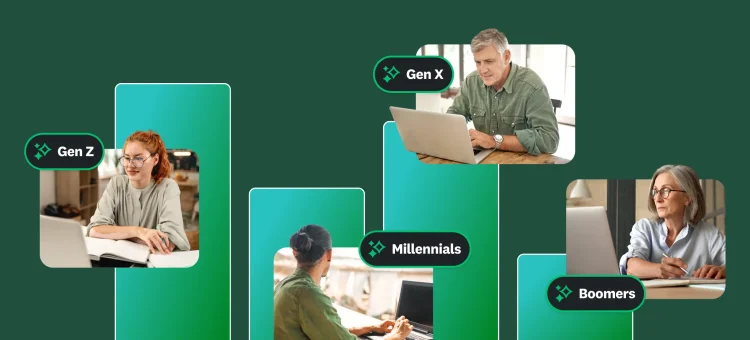A little about me: I enjoy cooking, so I go grocery shopping once a week. I regularly spent a considerable amount of cash at the nearest Regional Grocery Chain™ store, until I noticed their customer experience starting to slide. Fewer cashiers worked the registers. Lines swelled with dissatisfied patrons and I slowly realized I was spending as much time waiting to pay as I was actually shopping.
So I did what any inconvenienced, disgruntled customer of the modern era would do: I took to Twitter to air my grievances to their corporate account.
To my surprise, @RegionalGroceryChain™ tweeted back at me! They apologized profusely and told me management would address the issue. I felt vindicated.
Then weeks went by. The lines didn’t subside. I fired off more unhappy tweets, each getting a similar reply. It became clear: they weren’t really listening to me.
The result? For the past four years, I’ve been happily handing my grocery budget to stores with a superior customer experience.
Is your business losing potential lifelong customers like me? If so, how do you keep them to make sure you’re not missing out on long-term revenue? Read on for 4 ways to better your bottom line.
1) Measure Happiness: Establish Your Baseline
Philosophers have spent centuries debating the very nature of happiness and how to quantify it. Fortunately for us fast-paced business types, Bain & Co. threw abstract discourse—and more than a few college textbooks—out the window when they invented the Net Promoter Score® (NPS®, for short).
Now the world’s leading metric for measuring customer loyalty and happiness, NPS is also shown to be highly predictive of future growth. Businesses who use NPS are 33% more likely to report growth rates over 10% each year.
It starts with one question: “On a scale of 0 to 10, how likely would you be to recommend our company to a friend or colleague?”
Based on the response, you can classify your customers as:
Detractors: unhappy, potentially damaging your brand with negative word-of-mouth
Passives: satisfied but indifferent, could be lured away
Promoters: loyal customers who are also ripe for referrals
Then you can more intelligently tailor your efforts for each type of customer.
Regularly sending out NPS surveys gives you valuable insight on where you stand in your industry. Learn more about how to use it here.
2) Customer Success: The Key to Increasing Retention and Reducing Churn
Once you’ve gone through all the effort to convert a prospect into a customer, their money is yours to lose. Don’t let your sales and marketing teams’ efforts go to waste! Customer success and support programs are critical to ensuring your hard-won customers stay satisfied—and stay spending.
In fact, strong customer success programs have been credited with reducing some companies’ churn rates to <1%.
When your customers have an issue, the first step (obviously) is to try and fix it. The next step is to follow up! Run post-case support surveys with the following questions:
Did our support team solve your issue?
Would you like anyone to contact you to further discuss your issue?
A 2013 Bain & Co. study found that a 5% increase in customer retention rates had the potential to yield profit increases from 25% to 95%. So don’t let customers’ issues eat into your bottom line: solve them swiftly and reap the benefits.
3) Listening to Customers: It’s Important at Every Touchpoint
Customers are 5.2x more likely to purchase from companies with a great customer experience. Bear in mind that the customer experience is a massive thing: it starts all the way at the tippy top of the funnel orbiting somewhere around “awareness/interest” and then continues for the duration of the relationship.
This is why, at every touchpoint, you should be actively listening to your customers. Here are some questions you can ask at every stage of the funnel:
Interest: Through which of the following online formats do you prefer to learn about products?
Consideration: Are you the primary decision maker for your business?
Conversion: How important is price?
Support: How can we improve our product?
Retention: How likely are you to purchase our product again?
Advocacy: How likely is it that you would recommend our company to a friend or colleague?
Related reading: Discover the top five questions to ask customers and when to ask them.
4) Automating Your Action: Satisfy More Customers More Quickly
So now you’ve collected feedback at every touchpoint. Awesome!
However, getting the information isn’t enough—you need to act on it. That’s where automation becomes important. Syncing those survey responses to your engagement platform and its database with a tool like SurveyMonkey’s Marketo integration gives you the full picture of your customers’ satisfaction so you can set up triggers with the right follow-up actions.
Putting It All Together
Listen to your customers, solve their problems, and they’ll not only give you their money—they’ll give you more business.
Enriching your data with customer feedback gives you the actionable insights your business needs to turn prospects into customers—and customers into referral-rich advocates.
What are you doing today to ensure your customers are happy and continue to drive value for them? I’d love to hear what’s working or not working for you in the comments below.



